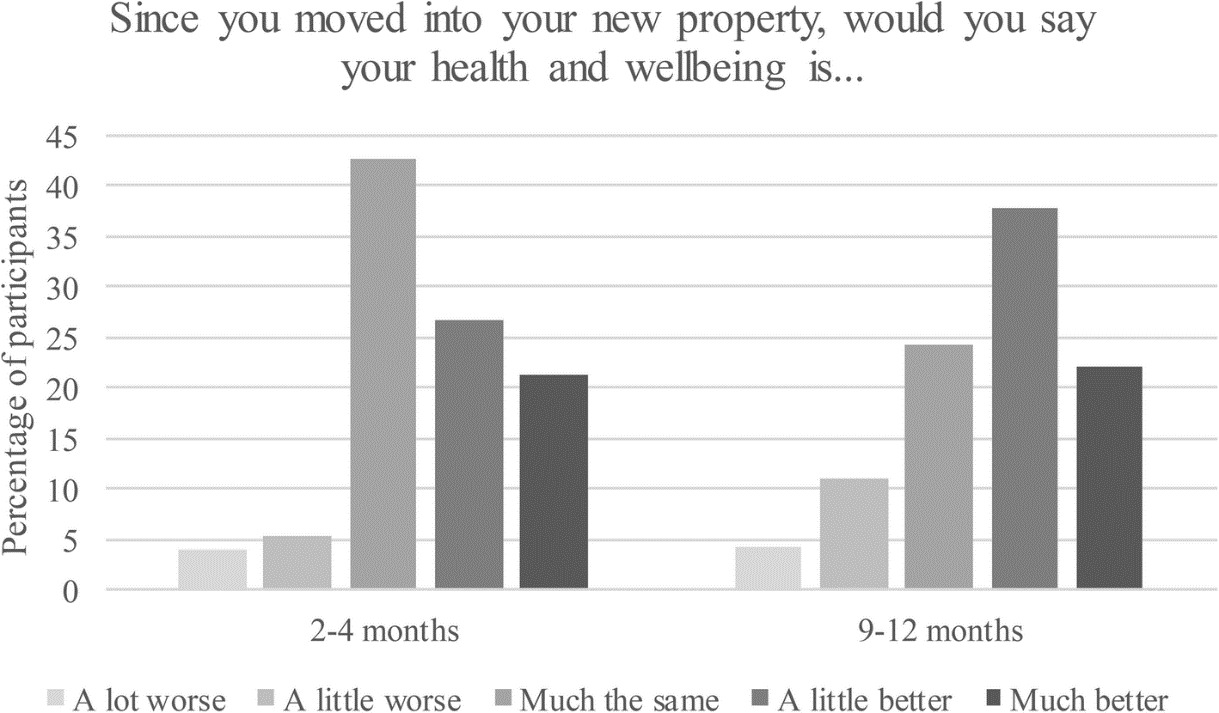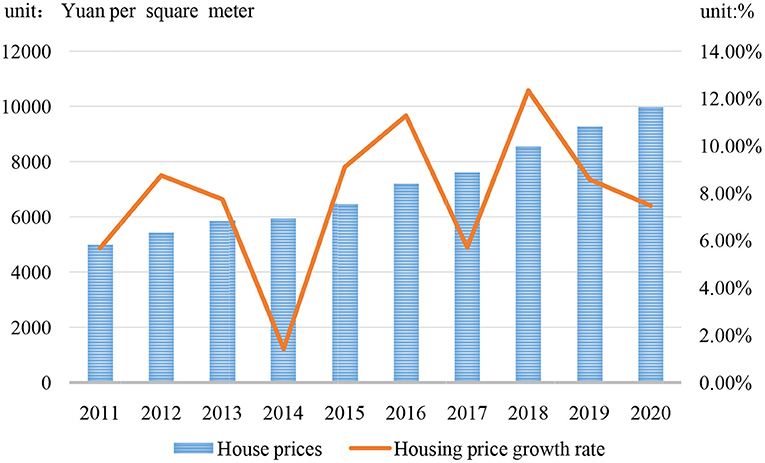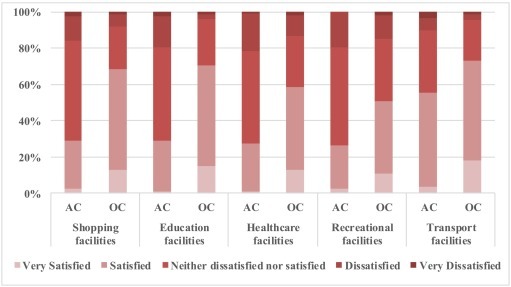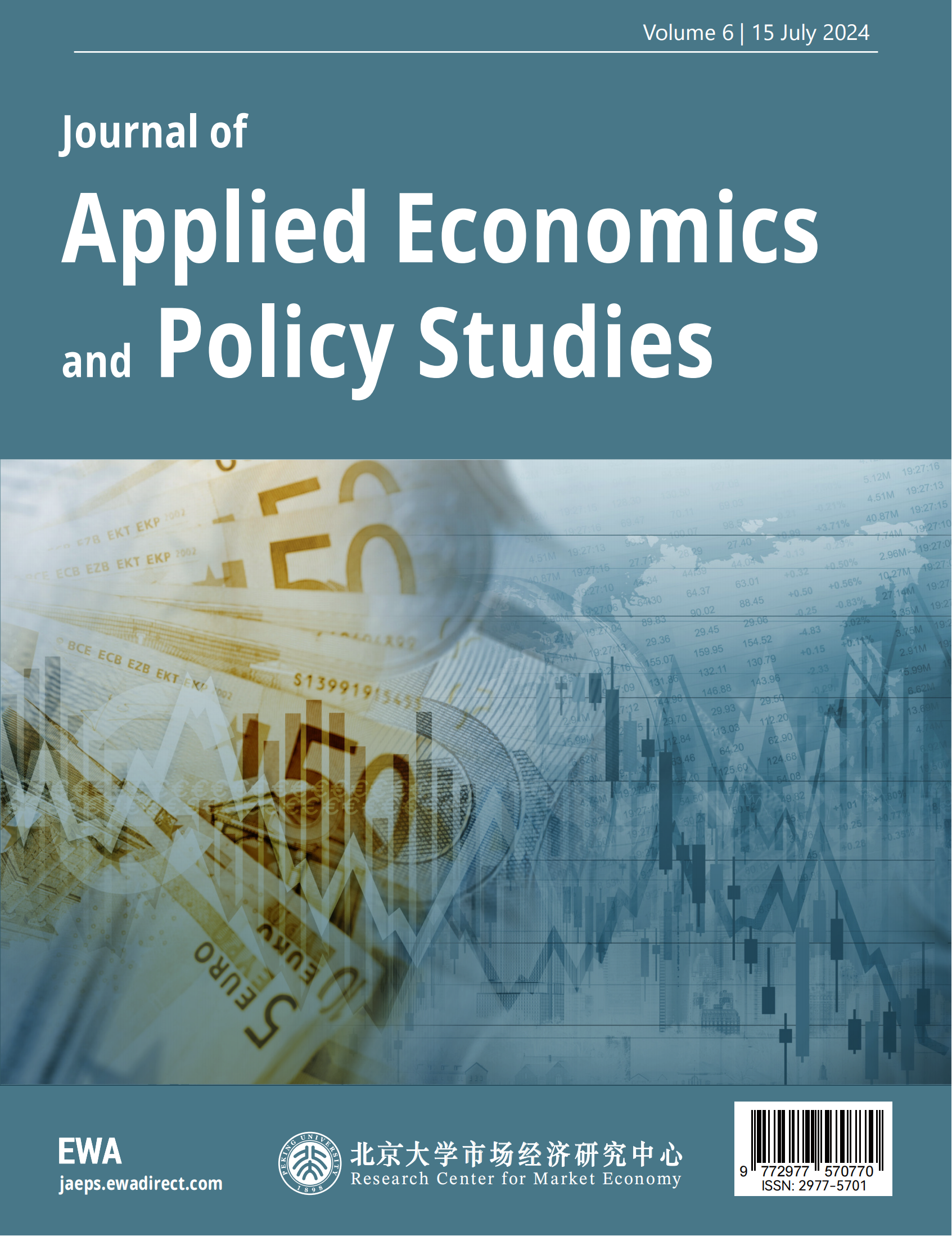1 Introduction
Affordable housing is a critical problem in China because of fast urbanization and economic development. Unaffordable housing leads to high stress and bad health for people, particularly those residing in city areas [8]. Every year, as the cost of housing rises, more and more families fail to attain decent living conditions, which has a direct impact on their health (both physical and mental). It was noted that inexpensive housing is not merely about the provision of a place to reside; it also contributes significantly to the general health and welfare of society [5].
This paper attempts to answer the question: How does access to affordable housing affect overall community health and well-being? The study is anticipated to show data on various health indicators as well as the social and economic improvements related to access to affordable housing. Quantitative data analysis provides an opportunity to really understand what affordable housing means for community health. The hypothesis to test for is that affordable housing increases community health and well-being. The hypothesis states that decent housing explicitly contributes to fewer stress, better intellectual wellness, and broad well-respected living [1]. A stable and affordable place to call home is expected to benefit a community with increased social stability and economic resiliency, promoting health [4].
The identification of this relationship in China will fill the existing literature gaps. This comprehension might serve as an important initial point of departure for implementing housing policies designed to enhance health and well-being, while reducing the strains exacted by urbanization and economic disparity. This study will add to knowledge in housing affordability as critical for improved health and represents a call for policy research that strengthens community development.
This study focuses on studying the regional diversity in housing policies and their implementation through urban–rural analysis. Second, we will highlight the unique contribution of affordable housing to population and community health across Chinese cities and uncover residents' subjective accounts about their affordable housing experience. In addressing each of these areas, the study seeks to paint a more complete picture of how affordable housing affects health and well-being, and thus may provide input for improved housing policy in the future.
2 Literature Review
2.1 The Relationship Between Affordable Housing and Health
Evidence from diverse contexts has shown that affordable housing and community health and well-being have an active relationship with robust, far-reaching impacts on physical and mental health outcomes. An overview of these studies establish that housing affordability is an important determinant of health and, in its turn, influences such elements as stress, mental condition, and healthcare use [1]. In particular, the problem in China is acrimonious due to the fact that fast-track urbanization and the consequent pressure on housing markets have escalated the property prices and limited the housing affordability of a considerable number of residents [11].
2.2 Historical Context of Affordable Housing in China
Historically, affordable housing in China was based on the economic reforms and urbanization policies that the country adopted. The late 20th century housing reform swayed China from welfare-based housing to market-oriented housing, which has changed greatly housing affordability and availability [3]. Government programs, such as the Affordable Housing Program, have tried to reduce the negative impact of such a transition by providing housing for low-income families. However, both the policy processes and their actual effectiveness vary across regions, and in this regard, a comparison between cities, for instance, Chongqing and Shenzhen, shows vast differences, with policies in Chongqing perceived to be more effective [5].
2.3 Affordable Housing Policies
Some studies show that the affordable housing policies in China have had mixed results. While some state the improvement in the living conditions and overall happiness of the citizen, others mention that a few challenges, such as inadequate funding, corruption, and dwelling-building mismatches, persist in the current housing market policies implementation process. Affordable housing can reduce stress and anxiety levels related to expenditures made on living arrangements, thus impacting mental health [11].
2.4 Health and Well-Being Dimensions
Health and well-being encompass many dimensions, including physical and mental health and overall life satisfaction. Affordable housing directly influences these dimensions as it empowers the quality and stability of living conditions. Poor housing, largely due to unaffordable housing, may result to health problems, from respiratory to cardiovascular diseases to problems with mental health [2]. In contrast, stable and affordable housing builds a base for a better health situation through an alleviation of financial pressure that, in turn, reduces stress levels and enables families to focus on healthier lifestyles.
2.5 Impact on Mental Health
Affordable housing also relates significantly with mental health. According to the findings by [1] unaffordable housing is notably related to stress, anxiety, and depression. In China, the same results have been reported by researchers who found that housing affordability is a very critical indicator of mental health status. For instance, [12] noted that the soaring house prices have negatively affected the mental health of the residents, setting in high levels of emotional problems, such as stress and anxiety.
2.6 Social Stability and Economic Well-Being
The behavioral factor of community health is social stability and economic well-being. In this regard, affordable housing affects these two components of a stable community health in that it helps to provide supporting and stable housing, which facilitates social stability and economic well-being [4]. Families that live in affordable housing units have low cases of crime and have their children having better outcomes in education, which leads to long-term social stability. Additionally, having an affordable house means families can, therefore, save and invest in other areas that promote their economic well-being and leads to the reduction of levels of poverty [3].
2.7 Challenges in Implementation
Even as the benefits of affordable housing are very many, there are a number of teething challenges that are associated with the implementation and maintenance of affordable housing policies in China. For example, such issues as delegation, financing, availability of land, and bureaucratic inefficiencies have been cited as factors of effective policy implementation [14]. Moreover, urbanization rapidly growing, generating the demand for housing that is always beyond the affordability of many people.
2.8 Comparison and Research Gaps
The relationship between affordable housing and health, historical shifts of housing policies in China, the mixed results and challenges associated with the affordable housing policy, and the way it affects mental health and social stability through making issues of making adequate housing affordable have been covered in the existing literature. However, gaps still exist. This study will incorporate the finer nuances of different regional policies within China, the long-term effects of innovative housing solutions, such as green building technologies, and a detailed analysis down to the most minor experiences in affordable housing for each specific demographic group.
This study will fill in the gaps through an exploration of regional diversity in the housing policy and its contexts of implementation in urban and rural diversities. Specifically, it will consider the effects of affordable housing on community health and well-being in selected Chinese cities, with an understanding of the relations and multifactor impacts of affordable housing in China.
3 Methodology
The research study will focus on comparative evaluation of affordable housing and community health and well-being in China. This work adopts a qualitative research method through a systematic review and meta-analysis of existing literature. The techniques comprise secondary research, which derives information from scholarly articles, books, government documents, and case studies.
Literature search was conducted from databases like JSTOR, PubMed, and Google Scholar with keywords like ‘affordable housing,’ ‘community health,’ ‘well-being,’ and ‘China’. Reports from the National Bureau of Statistics of China (2021) and other governmental sources provide insights into housing policies and their impacts. Case studies from regions like Beijing, Chongqing, and Shenzhen will be reviewed to understand the diversity in housing policies and their implementation across various contexts. These localized studies will help identify regional differences and articulate the national context of affordable housing's effects on health and well-being.
The qualitative analysis is done by identifying themes and patterns in the collected data. The coding and categorization processes are used to get information from the data under analysis. Primary focus in thematic analysis will be experiences and perceptions both at individual and community levels concerning affordable housing as an effort to understand this subtle impact of housing policy on health and well-being. The systematic review will be inclusive because an overview of the views presented will be made. Moreover, the aggregate of findings from various studies will offer more precise commonalities and divergences and prepare a comprehensive whole on the issue. On personal experiences the qualitative method also affords exploration into individual experiences, which adds richness to understanding how affordable housing influences the health and well-being of communities, for instance [4].
Based on this review, ethics will be considered since data will be used on a secondary basis. In this regard, each source of data is fully referenced to acknowledge the effort of the initial authors and, therefore, to register academic integrity. Moreover, research will ensure data used from openly accessible sources are coherent and well-contextualized.
4 Results and Discussion
The analysis shows that changes in housing experience associated with moving into a new tenancy substantively influence the health and well-being of the participants. Particularly, the researchers note that in the presence of positive new housing experiences, participants across the first year reported sustained or even improved health and well-being [9].

Figure 1. Housing Experience over the First Year [9]
For instance, [7] found quantitative proof of the fact that an increase in the housing-price-to-income ratio leads to a worsening or decline in both physical and psychological health, while a higher ratio is associated with worse physical health, i.e., physical health diminishes by 1.2%, while psychological health decreases by 1.9% with a 1% increase in this ratio. The increased housing costs in conjunction with decreased affordability were demonstrated to relate to mental health issues like depression, nervousness, hopelessness, and meaninglessness, which range from 1.0% to 1.4% in terms of increments. Furthermore, housing affordability stressors were related to unhealthy behaviors regarding the rates of smoking and late sleep, where the rates increased by 0.6% and 0.7%, respectively, and the noon nap rate decreased by 0.9%.
In [6] study, there were dose-response relationships in terms of housing affordability with health scores. Its results reveal that, in comparison with the highest affordable fourth quartile, the main Physical Component Summary (PCS) score is associated with drops of −2.53, −2.23, and −0.64 for the first, second, and third quartiles, respectively. Similarly, the main Mental Component Summary (MCS) score is associated with drops of −3.87, −2.35, and −1.28 for the same quartiles. Further on, deprivation mediated 34.3% of the housing unaffordability impact on PCS and 15.8% on MCS. These findings suggest that affordability of housing affects both physical and mental health partly by deprivation; they indicate that housing-targeted policies at deprived persons are likely to reduce health inequality alongside addressing housing affordability.
The speed of the reform of the housing system in China has been rapid since 1998. The average selling price of commercial housing has increased from 4,725 yuan/m² in 2010 to 9,980 yuan/m² in 2020, having doubled in the past decade [10]. Housing has become an important asset for city dwellers, and its appreciation in price has lifted their financial burden. According to the 2020 China Household Finance Survey report, the housing ownership rate of Chinese urban households was 89.68%, which was far higher than market expectations and the world average. This shows that the significant rapid increase in housing prices has changed the health status of the residents because the increment in the cost of housing creates a financial strain on the household, which causes stress and anxiety.

Figure 2. House prices and growth rate in China [10]
Housing affordability has become a growing concern in urban development in many countries. [13], in their research in Nanjing, China, showed that there was poor access to services for the Affordable Housing Communities (AHCs) when compared to the Other Housing Communities (OHCs), partly due to the inadequate neighborhood-level provision of low-order services and poor access at a distance of high-order services. On comparing the degrees of satisfaction with the household survey conducted among the AHCs and the OHCs, the latter resulted in low degrees of satisfaction, which were weakly attached to the community and intended to move. The results show the need of fastening construction of affordable housing needs to be ensure the communities have a good place to live in.

Figure 3. Comparison of spatial access to services between AHCs and OHCs [13]
5 Policy Implication and Conclusions
The results of this study underscore the importance of affordable housing in enhancing community health and well-being in China. There is indeed evidence that housing affordability determines physical and mental health. [7], for example, showed that more expensive housing was related to deteriorating physical and psychological health, while [9] showed health and well-being improvements for those moving into better housing conditions. As such, the results of these studies underpin the need for policy on affordable housing to be an integral part of the public policy for policymakers.
A stronger and fairer housing policy that will cushion the negative effects of unaffordable housing. This will include, the need to increase funding for the program of affordable housing, the need to enhance efficiency in the implementation of the housing policy, and linking housing development to a sufficient scale of social service and infrastructure. It is also noteworthy that public health strategy should include policy on affordable houses. More important, rapid urbanization and economic growth in the country have substantially increased the prices of the houses, thus making housing affordability issues more serious. More houses require new policy solutions, such as rent control measures, subsidies targeted at low-income households, and the supply of more affordable housing units to make many houses affordable for most people in the country.
According to [10], the average selling price of commercial housing in China nearly doubled from 2010 to 2020, thus increasing financial pressure on most urban households. All of these require innovative policy solutions, such as rent control measures, subsidies targeted at low-income households, and the supply of more affordable housing units to make more houses affordable to large population. Also, [13] called for better spatial planning to ensure that affordable housing communities have sufficient means of access to essential services. Inadequate access to services in affordable housing communities will engender dissatisfaction and the desire to move, thus threatening to negate potential positive outcomes of affordable housing. It is for this reason that urban planners and policymakers, when designing new affordable housing communities, have to plan for a comprehensive package of services. Among the services envisaged are health care, education, transportation, and recreational facilities all with substantial contributions to the well-being of the community and to social cohesion.
The high homeownership rate in China reported by the 2020 China Household Finance Survey [10] further means that policy too needs to be directed in a way that ensures a more sustainable form of homeownership. This can be through the control of housing markets and preventing a speculative nature of investing in real estate, which leads to increased prices and then, consequently, leads to reduced affordability for genuine homebuyers. By adopting policies that are against speculation and supportive of stable and long-term homeownership, the government may, in turn, play a role in stabilizing the sector. Affordable housing is one area in which policy intrudes across physical and mental health, social stability, and economic resilience. A multidimensional approach that boosts the supply of affordable housing, integrates services, and promotes sustainable home ownership is what's required. Future research should keep working on innovative solutions to track the long-term outcomes of affordable housing policies to be effective in serving the population of a rapidly urbanizing China.
Acknowledgment
This paper results from an academic exercise for EPPE6154 semester 2 session 2023/2024 funded by EP-2018-001 at the Faculty of Economics and Management, Universiti Kebangsaan Malaysia.
References
[1]. Arundel, R., Li, A., Baker, E., & Bentley, R. (2024). Housing unaffordability and mental health: dynamics across age and tenure. International Journal of Housing Policy, 24(1), 44-74.
[2]. Baker, E., Lester, L., Mason, K., & Bentley, R. (2020). Mental health and prolonged exposure to unaffordable housing: a longitudinal analysis. Social psychiatry and psychiatric epidemiology, 55, 715-721.
[3]. Chen, B., Yang, X., & Zhong, N. (2020). Housing demand and household saving rates in China: Evidence from a housing reform. Journal of Housing Economics, 49, 101693.
[4]. Chen, J., Qi, X., Lin, Z., & Wu, Y. (2022). Impact of governments’ commitment to housing affordability policy on people’s happiness: Evidence from China. Housing Policy Debate, 32(4-5), 622-641.
[5]. Cheung, K. L., Day, J., Wu, H., & Tomlinson, R. (2019). One policy, two paths: the development of a Chinese national housing policy and its implementation in Chongqing and Shenzhen. In A Research Agenda for Housing (pp. 100-115). Edward Elgar Publishing.
[6]. Chung, R. Y. N., Chung, G. K. K., Gordon, D., Mak, J. K. L., Zhang, L. F., Chan, D., ... & Wong, S. Y. S. (2020). Housing affordability effects on physical and mental health: household survey in a population with the world’s greatest housing affordability stress. J Epidemiol Community Health, 74(2), 164-172.
[7]. Guo, X., Zhong, S., Li, L., & Luo, M. (2024). How housing burden damages residents’ health: evidence from Chinese cities. Frontiers in Public Health, 12, 1345775.
[8]. Li, K., Qin, Y., & Wu, J. (2020). Recent housing affordability in urban China: A comprehensive overview. China Economic Review, 59, 101362.
[9]. Rolfe, S., Garnham, L., Godwin, J., Anderson, I., Seaman, P., & Donaldson, C. (2020). Housing as a social determinant of health and wellbeing: Developing an empirically-informed realist theoretical framework. BMC Public Health, 20(1), 1138.
[10]. Wang, H. Q., & Liang, L. Q. (2022). How Do Housing Prices Affect Residents' Health? New Evidence From China. Frontiers in Public Health, 9, 816372.
[11]. Wang, Y., Mao, Z., & Wang, D. (2023). Housing affordability and mental health in urban China: a cross-sectional study. Housing Studies, 38(3), 484-504. https://doi.org/10.1080/02673037.2021.1888891
[12]. Wei, G., Zhu, H., Han, S., Chen, J., & Shi, L. (2021). Impact of house price growth on mental health: Evidence from China. SSM-Population Health, 13, 100696.
[13]. Zeng, W., Rees, P., & Xiang, L. (2019). Do residents of Affordable Housing Communities in China suffer from relative accessibility deprivation? A case study of Nanjing. Cities, 90, 141-156.
[14]. Zhang, G., Xu, K., Liu, Z., Huang, R., Li, B., & Wang, R. (2023). A systematic critical review on policy-based initiatives of China's affordable housing: Challenges and opportunities. Developments in the Built Environment, 100222.
Cite this article
Xia,J.;WOOK,T.K.T. (2024). The Impact of Affordable Housing on Community Health and Well-Being in China. Journal of Applied Economics and Policy Studies,6,40-45.
Data availability
The datasets used and/or analyzed during the current study will be available from the authors upon reasonable request.
Disclaimer/Publisher's Note
The statements, opinions and data contained in all publications are solely those of the individual author(s) and contributor(s) and not of EWA Publishing and/or the editor(s). EWA Publishing and/or the editor(s) disclaim responsibility for any injury to people or property resulting from any ideas, methods, instructions or products referred to in the content.
About volume
Journal:Journal of Applied Economics and Policy Studies
© 2024 by the author(s). Licensee EWA Publishing, Oxford, UK. This article is an open access article distributed under the terms and
conditions of the Creative Commons Attribution (CC BY) license. Authors who
publish this series agree to the following terms:
1. Authors retain copyright and grant the series right of first publication with the work simultaneously licensed under a Creative Commons
Attribution License that allows others to share the work with an acknowledgment of the work's authorship and initial publication in this
series.
2. Authors are able to enter into separate, additional contractual arrangements for the non-exclusive distribution of the series's published
version of the work (e.g., post it to an institutional repository or publish it in a book), with an acknowledgment of its initial
publication in this series.
3. Authors are permitted and encouraged to post their work online (e.g., in institutional repositories or on their website) prior to and
during the submission process, as it can lead to productive exchanges, as well as earlier and greater citation of published work (See
Open access policy for details).
References
[1]. Arundel, R., Li, A., Baker, E., & Bentley, R. (2024). Housing unaffordability and mental health: dynamics across age and tenure. International Journal of Housing Policy, 24(1), 44-74.
[2]. Baker, E., Lester, L., Mason, K., & Bentley, R. (2020). Mental health and prolonged exposure to unaffordable housing: a longitudinal analysis. Social psychiatry and psychiatric epidemiology, 55, 715-721.
[3]. Chen, B., Yang, X., & Zhong, N. (2020). Housing demand and household saving rates in China: Evidence from a housing reform. Journal of Housing Economics, 49, 101693.
[4]. Chen, J., Qi, X., Lin, Z., & Wu, Y. (2022). Impact of governments’ commitment to housing affordability policy on people’s happiness: Evidence from China. Housing Policy Debate, 32(4-5), 622-641.
[5]. Cheung, K. L., Day, J., Wu, H., & Tomlinson, R. (2019). One policy, two paths: the development of a Chinese national housing policy and its implementation in Chongqing and Shenzhen. In A Research Agenda for Housing (pp. 100-115). Edward Elgar Publishing.
[6]. Chung, R. Y. N., Chung, G. K. K., Gordon, D., Mak, J. K. L., Zhang, L. F., Chan, D., ... & Wong, S. Y. S. (2020). Housing affordability effects on physical and mental health: household survey in a population with the world’s greatest housing affordability stress. J Epidemiol Community Health, 74(2), 164-172.
[7]. Guo, X., Zhong, S., Li, L., & Luo, M. (2024). How housing burden damages residents’ health: evidence from Chinese cities. Frontiers in Public Health, 12, 1345775.
[8]. Li, K., Qin, Y., & Wu, J. (2020). Recent housing affordability in urban China: A comprehensive overview. China Economic Review, 59, 101362.
[9]. Rolfe, S., Garnham, L., Godwin, J., Anderson, I., Seaman, P., & Donaldson, C. (2020). Housing as a social determinant of health and wellbeing: Developing an empirically-informed realist theoretical framework. BMC Public Health, 20(1), 1138.
[10]. Wang, H. Q., & Liang, L. Q. (2022). How Do Housing Prices Affect Residents' Health? New Evidence From China. Frontiers in Public Health, 9, 816372.
[11]. Wang, Y., Mao, Z., & Wang, D. (2023). Housing affordability and mental health in urban China: a cross-sectional study. Housing Studies, 38(3), 484-504. https://doi.org/10.1080/02673037.2021.1888891
[12]. Wei, G., Zhu, H., Han, S., Chen, J., & Shi, L. (2021). Impact of house price growth on mental health: Evidence from China. SSM-Population Health, 13, 100696.
[13]. Zeng, W., Rees, P., & Xiang, L. (2019). Do residents of Affordable Housing Communities in China suffer from relative accessibility deprivation? A case study of Nanjing. Cities, 90, 141-156.
[14]. Zhang, G., Xu, K., Liu, Z., Huang, R., Li, B., & Wang, R. (2023). A systematic critical review on policy-based initiatives of China's affordable housing: Challenges and opportunities. Developments in the Built Environment, 100222.









